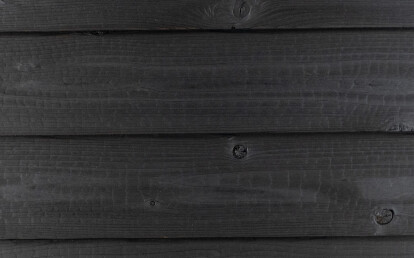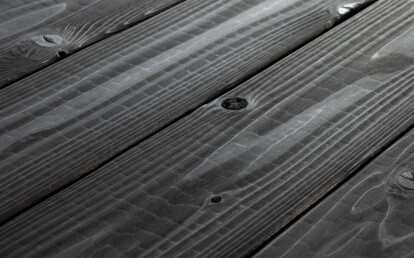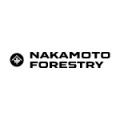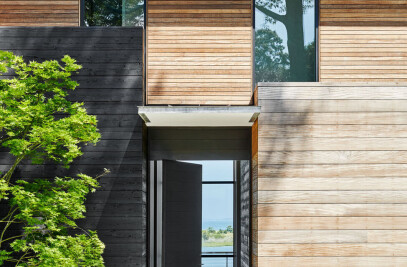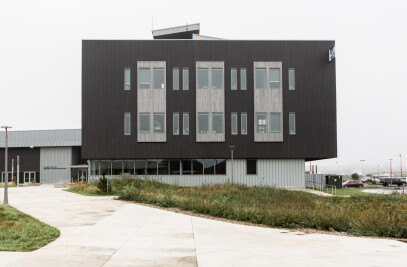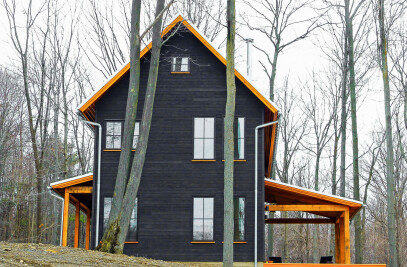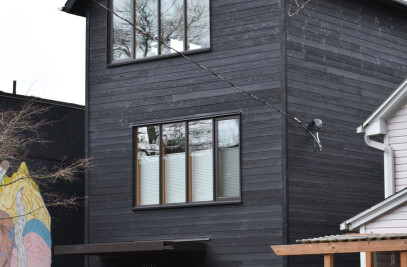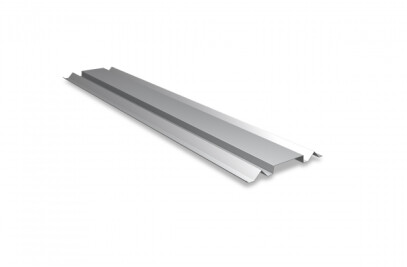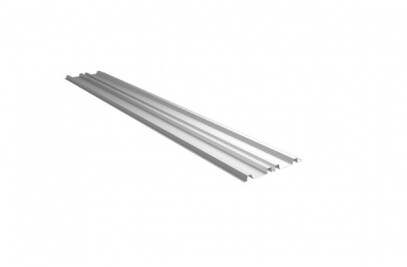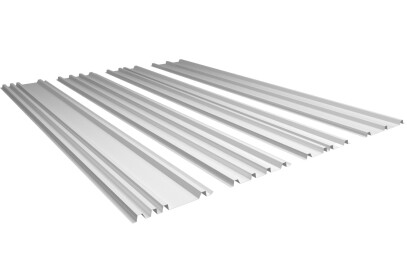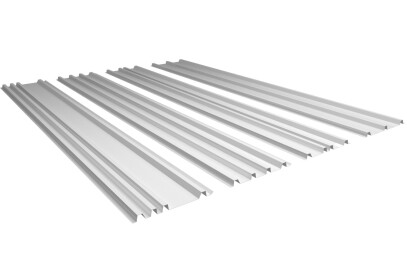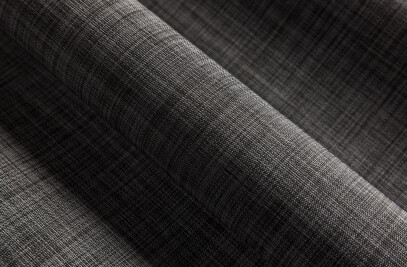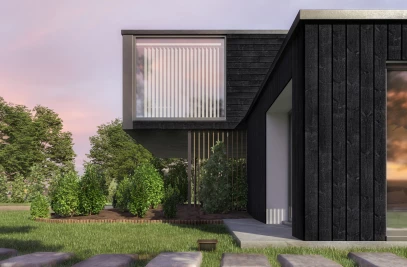The Nakamoto Zourin group is the largest siding mill in Japan and the world’s largest manufacturer of Yakisugi, a traditional Japanese method of wood preservation to achieve burnt timber cladding in the world, also known as “shou sugi ban”. The process of producing this cladding includes lightly brushing off the top layer of delicate soot - leaving a smooth, consistent, and dark surface. Nakamoto has managed sugi and hinoki forest in Hiroshima for over 100 years, and has four main mills that produce siding and flooring from sugi, hinoki, pine, oak, cherry, cedar, spruce, larch, and other species. Its Gendai with Linseed Oil BLACK is a product that comes with a factory oil finish, delivered ready to install.

This product comes with a factory oil finish and is delivered ready to install. Oil finishes are applied to achieve the desired color, offer better color longevity over time, and to bond in surface soot. Refinishing every 2~15 years will slow down the aging process and allow the siding to retain the specified color longer. However, this is a maintenance-optional product due to heat treatment. Touchup oil for end cuts, notches, and rips is included with each wood order shipment.
Product details
Gendai with Linseed Oil BLACK is finished in a semi-transparent traditional oil, which aids in durability for exterior applications. A light brushing process knocks down the heavy soot layer and leaves a smooth, silky appearance. The burnt fiber crevasse shadows are subtle, and Gendai can either be installed with or without an oil prefinish.
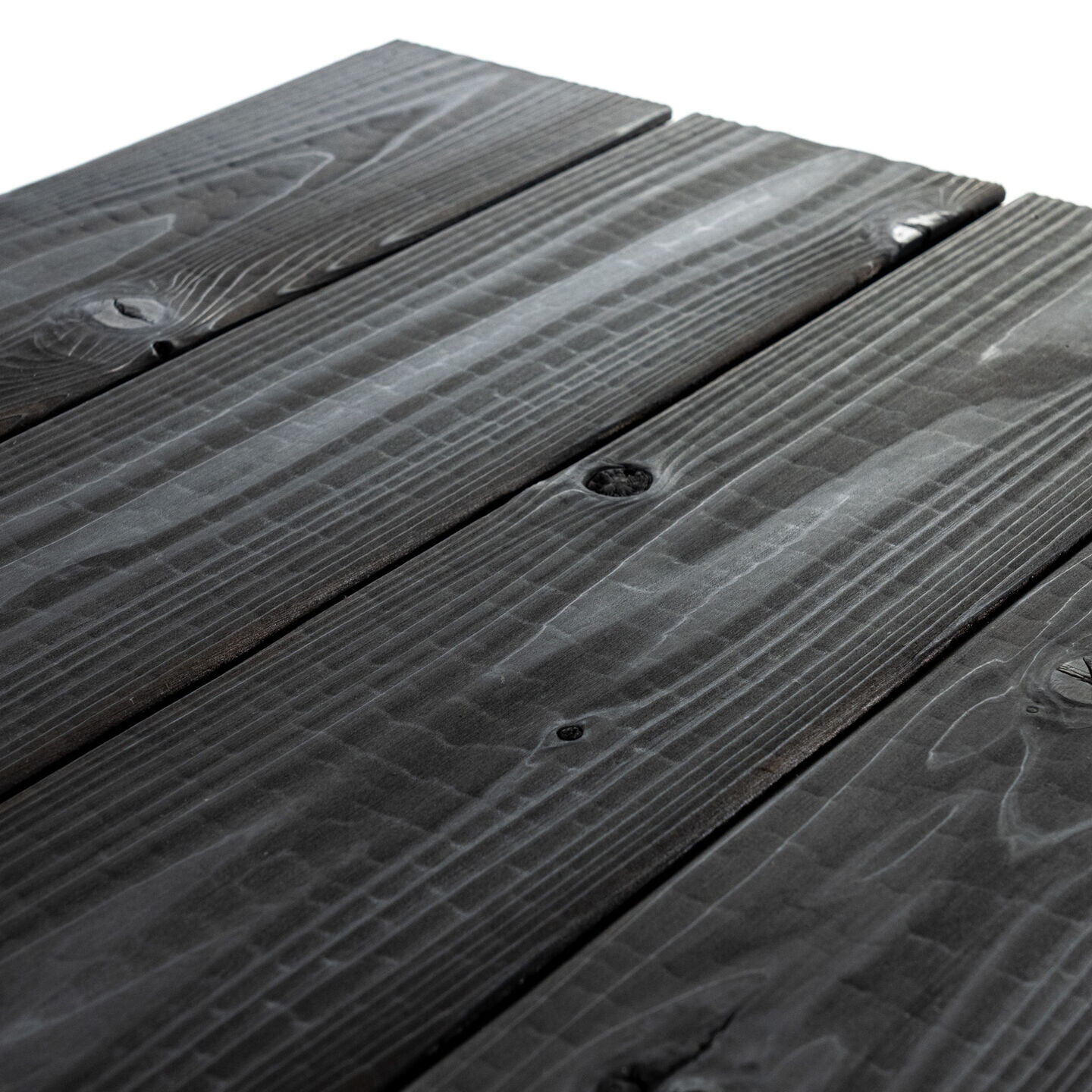
This product comes with a factory oil finish and is delivered ready to install. Oil finishes are applied to achieve the desired color, offer better color longevity over time, and to bond in surface soot. Refinishing every 2 to 15 years will slow down the aging process and allow the siding to retain the specified color longer. However, this is a maintenance-optional product due to heat treatment. Touchup oil for end cuts, notches, and rips is included with each wood order shipment.

The cladding is produced in two grades with different edge conditions:
Select Grade: 1x6x12 shiplap, 1x6x12 square edge, and 1x8x12 square edge
Joko Premium Clear Grade: 1x6x12 shiplap
Cladding that is both modern and ancient
Gendai, a term derived from Japanese, translates to ‘modern’ or ‘contemporary.’ It represents a fusion of traditional craftsmanship and innovative materials to create a harmonious blend of past and present.
Shou Sugi Ban is a traditional Japanese technique of charring wood to enhance its durability and aesthetics. The process involves carefully burning the surface of the wood, followed by brushing off the charred residue to reveal a unique texture. This ancient method not only adds resilience to the wood but also creates a visually captivating finish.
Linseed oil, derived from flaxseeds, has been a staple in woodworking for centuries due to its natural protective properties and ability to enrich wood grain. When combined with Shou Sugi Ban, it adds a modern twist, enhancing the visual impact of the charred surface. The BLACK variant of Linseed Oil introduces a bold and contemporary element, transforming the wood into a sleek, sophisticated canvas that resonates with the minimalist aesthetic often associated with Gendai design.
The fusion of Shou Sugi Ban and Linseed Oil BLACK by Nakamoto Forestry offers an aesthetically beautiful wood product with enhanced resilience against weathering and decay. The charring process makes the wood more resistant to pests, while the linseed oil acts as a natural barrier, protecting it from moisture and UV radiation.
A beacon of sustainable and innovative practices
Nakamoto Forestry was founded by visionaries committed to environmental responsibility and has become an excellent leader in forestry management. The company is the largest producer of authentic shou sugi ban (yakisugi) in the world and has now expanded distribution to North America with inventory in Portland, Oregon.
Nakamoto Forestry is owned by the Nakamoto family and headquartered in Hiroshima prefecture on the west side of Japan. Nakamoto Forestry has several thousand acres of managed forest in Hiroshima adjacent to a national park and not far from the Miyajima Shrine. They have owned and managed large tracts of forest for decades, using the logs their harvest teams bring in to mill the most consistent Shou Sugi Ban (Yakisugi) available anywhere. We have four main mills in Hiroshima and Tokushima prefectures that complete the entire manufacturing process.
Nakamoto Forestry is renowned for its dedication to sustainable logging practices, emphasizing reforestation and conservation. By implementing cutting-edge technologies and adhering to strict environmental standards, the company ensures the responsible harvesting of timber resources, mitigating the impact on ecosystems.
What sets Nakamoto Forestry apart is its holistic approach to forestry, blending traditional wisdom with modern methodologies. The company not only supplies high-quality timber products but also places a strong emphasis on carbon sequestration, biodiversity conservation, and community engagement. This commitment has earned Nakamoto Forestry recognition and trust in the industry and among environmentally conscious consumers.
As a trailblazer in the forestry sector, Nakamoto Forestry has set a precedent for companies aspiring to merge profitability with ecological stewardship. With a focus on sustainable practices, innovation, and community collaboration, Nakamoto Forestry remains at the forefront of the global movement towards a greener and more sustainable future.
Project References
North Vancouver Passive House Plus
This home combines the character and heritage of the past with the innovation and sustainability needs of the future. The owners of this North Vancouver Craftsman bungalow, originally built in 1912, envisioned a home that reflected the history of its location and of their 20 years living there as a family while being functionally and visually inspiring and highly energy efficient. Over three years, the house was transformed by our team into a modern, energy efficient home that retains its history and character. This was the first Passive House Plus certified home in the lower mainland of BC, a standard that requires ultra-low energy consumption with up to 90 percent reduction and is a step further than the internationally recognized Passive House standard.
The new element of the house is a simple modern volume that reflects and complements the form and character of the existing bungalow. A dramatic cantilever of the roof provides a large covered balcony that wraps the master bedroom. This entire volume is clad in “shou sugi ban” or charred cypress siding. This traditional Japanese method of treating wood creates a beautiful and rich texture and provides an inherent treatment to the material that increases the weather resistance and prevents rot and insects, while also reducing the need for additional finishes like paint or stain.
This project is a vacation home for a family to enjoy the beauty of Swauk Prairie in Hidden Valley near Cle Elum, Kittitas County, Washington. It was a highly collaborative project between the owners, Syndicate Smith (Steve Booher lead), Mandy Callaway, and Merle Inc. The Pika-Pika exterior scope was pre-treated with a fire retardant for good measure due to being located in a high-fire zone on the east side of the Cascade mountain range, about 90 minutes east of Seattle.
This epicurean exercise is a single-family residence beautifully designed by KOS+A and meticulously built by Hagerman Builders of Sag Harbor. Black Gendai was used in combination with weathering tropical hardwood and intermittent glazing for high contrast. Photos by Read McKendree.


